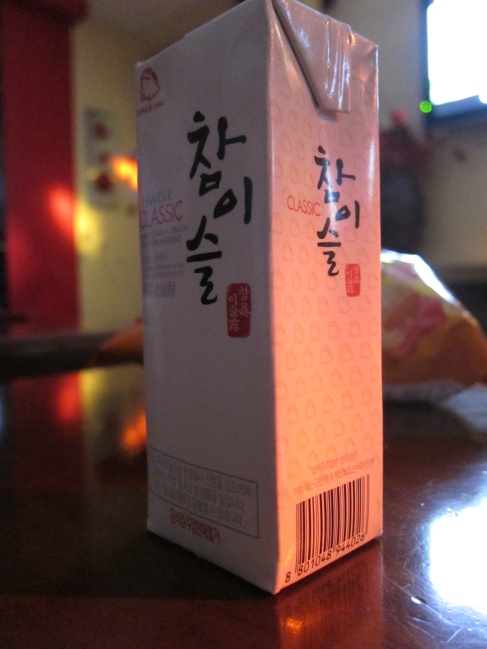Sometimes when my sister and I are visiting Seoul, my parents seem to forget that we used to live there. They’ll say, “We’re taking you to this great noodle place,” forgetting that we’ve gone there every year for the last ten years. Which is why I think my dad was so happy to think of a place I’d never been and a food I’d never eaten: 오전명가 (Ohjeon Myeongga) for grilled duck.
We drove about an hour and a half out of the city and ended up on a long curving road up and around Namhansansung, a walled fortress with a long history near Gwangju City in Gyeonggi Province. (If you’ve clicked through to the Namhansansung website, please don’t mention the English translation. I’d make fun of it, but it would be too cheap a shot.) As we drove, my father told a story as meandering as the road about how the king ran away to hide during an invasion. It didn’t sound like it ended too well, but the mountains are now a lush and lovely place popular with weekend hikers.
When we drove up to the restaurant, I automatically walked in the front door and thought, “Where is everyone?” The restaurant was empty because everyone was sitting out back by the creek.
While the adults eat and grill and drink beer and soju to their hearts’ content, their kids wade in the creek and try to catch tadpoles. It made me intensely nostalgic for the days when I was one of those kids.
Luckily, there’s much to enjoy as an adult. Who knows how much I would have enjoyed grilled duck as a child? As an adult, I can attest I enjoy it very much. The meat came marbled and meaty, including some cuts of a tough, hard organ my father said was probably duck heart. I’d never seen raw duck before — its color is obviously richer and redder than chicken, but more burgundy-hued than beef and definitely richer in color than pork. The duck came completely raw and unseasoned, with a giant bowl of chive and onion salad, lettuce, perilla leaves, a couple of tart kimchis, and plenty of salt and fermented bean paste for wrapping everything up.
The food was excellent. As much as I liked the duck, I was enamored with the wild sesame sujebi or torn pasta that was served at the end. I’ve had sujebi before, which are chewy bits of dough cooked in soup, a very cheap Korean lunch. But I’d never had sujebi cooked in wild sesame broth. The seeds had been ground, the broth was thick and almost gritty, with a wonderful, nutty flavor and smell. I was so full of duck by the time it came out, I thought I’d just have a bite or two, but I could not stop eating it. It’s been a while since a Korean dish has really surprised me like this.
Best of all, as new as the duck and the stew and the restaurant were to me, the experience was not. It’d been a long time since I’d been to a restaurant like that, but it was as warm and familiar as my grandmother’s house. I felt like I recognized the creek, the plastic tables, the beer glasses printed with “Cass,” and even the other people enjoying a long and hearty lunch on a balmy Sunday in June. The next time a friend visits me in Korea, this is where I want to take them, to show what my Korea is like.
오전명가
Gyeonggi-do, Gwangju-Si Jungbuhmyun Ohjeonli 309-1
(031) 746-4425
You can find much better photos, including photos of delicious dishes we didn’t try, and a little map on this Korean blog.














































